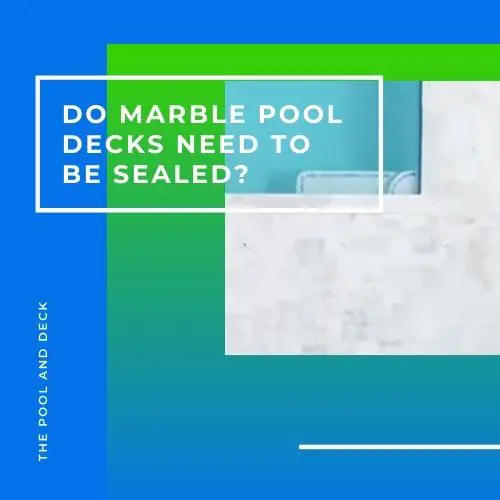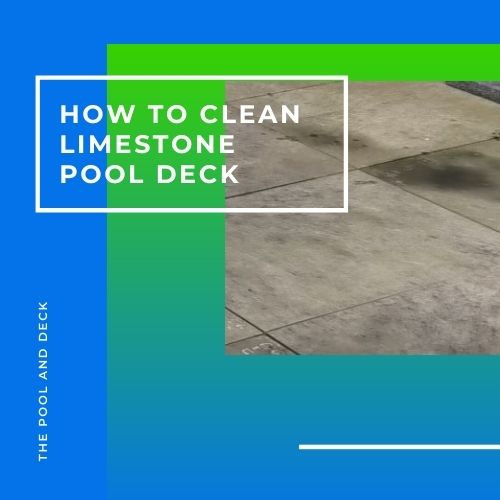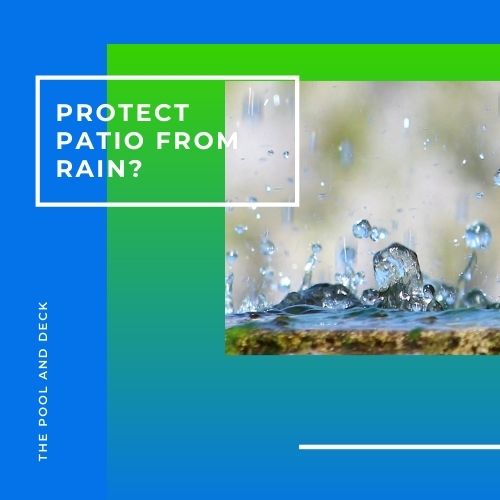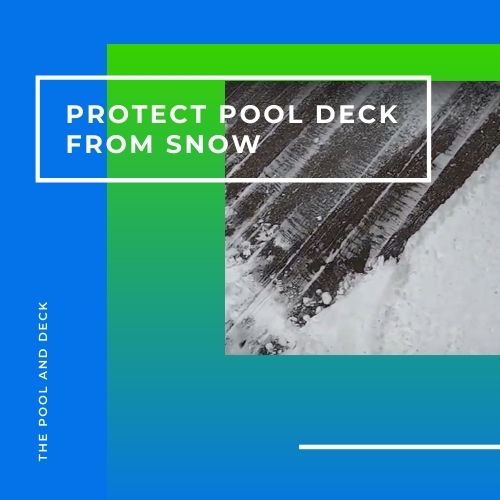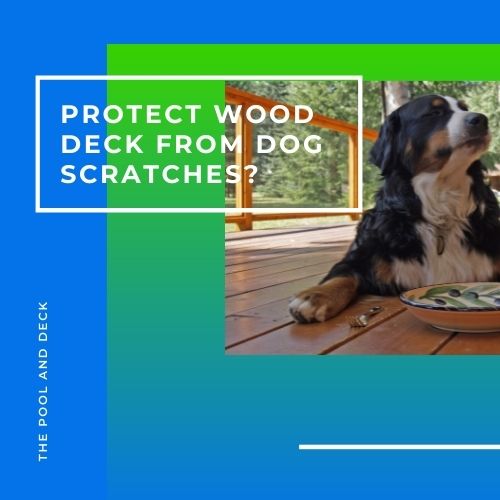How To Pressure Wash A Travertine Deck? 4 Expert Tips!
As an Amazon Associate, I earn from qualifying purchases.
Table of Contents
Can You Pressure Wash Travertine Pool Deck?
Travertine pool decks are popular for their beauty, slip resistance, coolness in the sun, and durability. However, can you pressure wash a travertine deck?
Yes, but use a low-pressure setting. After pressure washing, check the sealer’s effectiveness and reseal the tiles or pavers if needed.
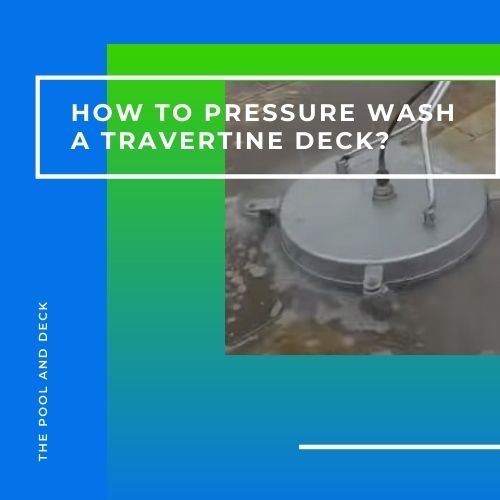
Travertine is quite durable and compares well with other stones from the sedimentary rock group, such as limestone and sandstone.
But durability is not the same as hardness.
Hardness is a measure of a stone’s ability to resist scratches. Hardness of natural stones and minerals is measured on the Mohs scale. Mohs scale is a relative scale with diamond at 10 and talc at 1.
Natural stones rich in calcite (Calcium Carbonate), such as marble, limestone & travertine rank around 3 on the Mohs scale. In comparison granite ranks at 6.5 and quartz at 7.0.
Travertine is actually softer than marble & limestone. Movement of deck furniture or a hard pressure wash can scratch or mar a travertine pool deck.
1. Should You Use a Deck Cleaner with a Pressure Washer?
Do not start cleaning your travertine deck by blasting it with a high pressure water stream from your pressure washer. In fact, using pressure washing should be the penultimate step in your cleaning and maintenance routine.
Follow these steps to clean your travertine pool deck, before you whip out the pressure washer wand:
- Sweep your travertine pool deck, with a broom, while it is still dry. This way you give the dust less chance to get wet and embed itself in the porous, textured travertine paver or tile.
- Clean the travertine deck with a pH neutral soap solution, such as Dawn, and a garden hose.
- Remove stains using the appropriate stain remover.
If the travertine looks nice and clean, give the pressure washing a miss. But if you feel your travertine pool deck still has some grime on it, then it may be time for a pressure wash.
Always use a deck cleaner along with the pressure wash. The process to follow is:
- Wet the deck by spraying water on it with a garden hose
- Prepare a solution of the deck cleaner in a bucket of water and flood the deck with this solution
- Leave the solution on the deck for 10 – 15 minutes, so that it has time to lift off the grime
- Pressure wash with a rotary surface cleaner attachment
- Pressure wash the travertine pool deck once again to rinse off the deck cleaner & grime residue
A good deck cleaner will lift the grime effortlessly from the travertine tile or paver without damaging the surface or diminishing the natural travertine color.
2. What Cleaner Do You Use for Pressure Washing?
It is common to use household products like chlorine, bleach, vinegar, baking soda or ammonia to clean decks. However, none of these are good for a travertine deck. Why?
Travertine is a sedimentary rock characterized by high porosity and high calcite content. Both, acids & alkalis, will corrode travertine. All the above products, mentioned above are either acidic or alkaline and therefore damaging to travertine.
You must always use pH neutral cleaners on Travertine.
Black Diamond’s Stone Wash is formulated specifically to clean porous natural stone surfaces such as limestone & travertine. Stone Wash is pH neutral and biodegradable. Stone Wash lifts dirt effortlessly from natural stone without damaging the surface or diminishing natural stone color.
Alternatively you can use cleaning products that are formulated using hydrogen peroxide.
Simple Green Oxy Solve Deck and Fence Pressure Washer Cleaner lifts away tough grime and oil & grease stains using the power of hydrogen peroxide. No harsh chemicals are included in the formulation.
3. How Do You Pressure Wash a Deck Without Leaving Marks?
All pressure washers come with a psi rating. This is the maximum water pressure that the pressure washer will deliver. This is the pressure at the wand nozzle tip.
The water pressure that is created on the deck surface drops & depends on:
- The distance between the nozzle and deck
- The spray spread
- The spray angle
If you do not want the water pressure to abrade the travertine surface then you need to control the spray distance, spread & angle. Moreover, you have to keep the spray moving across the deck in slow, but uniform circular motion. Avoid spraying the same area continuously for too long.
I must admit that this is easier said than done. The spray gun is well, ultimately a kind of a gun. And don’t we love playing with guns? Not surprisingly, we are more likely to overdo the pressure washing than underdo it!
The best solution to get controlled and effective cleaning of the deck, patio driveway, etc. is to use a rotary surface cleaner attachment at the end of the wand. The attachment has:
- Two rotating flat jet nozzles
- Splash guard
- Adjustable height
The attachment ensures a constant spray distance, spread & angle.
You should check out Karcher Universal 11″ Pressure Washer Surface Cleaner Attachment for Electric Power Pressure Washers.

Its key features are:
- Universal Compatibility: Compatible with Karcher & most non-Karcher pressure washers
- Efficient Cleaning: Two high RPM spinning nozzles instead of one
- Multi-Surface Cleaner: Works on concrete, driveways, patios, decks, sidewalks and more
- Splash-Free Skirt: A shroud and splash-free skirt minimize overspray
- Superior Clean: Eliminates streaks as nozzles at a fixed height from the deck
4. How Do You Clean and Seal Exterior Travertine?
Once you are done pressure washing your travertine pool deck, you will need to seal it.
But before that check the status of sand between the travertine pavers. They may have gotten depleted because of weathering and normal wear & tear. In that case you will need to re-sand the pavers before you seal them.
To find out more check out my blog post Why Re-Sand Pavers; How To Do It & What Is The Best Sand?
The best sand for paver joints is polymeric sand. Polymeric sand is a fine sand that is combined with additives that form a binding agent when exposed to water. Water activates the setting of the polymeric sand
Polymeric sand is great for pavers in 4 ways:
- Prevents weed growth from bottom
- Stops insects from burrowing from the top
- Keeps pavers together & prevents shifting
- Blocks water penetration
Check out Polymeric Sand for Paver Joints
Before you reseal travertine pavers, do a simple test to find out if they actually need to be resealed.
Sprinkle a few drops of water on the dry travertine paver surface. If the water beads up, then the sealer is still effective and you need not reseal. But if the water gets absorbed then you certainly need to reseal.
There are three types of sealers that can be used on travertine pavers.
Enhancing Stone Sealers:
Enhancing Stone Sealers penetrate and bring out the natural vibrant colors locked within travertine. They protect against staining and acid discoloration.
Recommended Product: Black Diamond Color Enhancer Sealer for Travertine Pavers.
Impregnating Stone Sealers:
Impregnating Stone Sealers are purely functional. Like enhancing sealers, they penetrate into the pores of the travertine paver, solidify and block them. Water, stains or harmful chemicals can not enter the pores.
Recommended Product: Miracle Sealants 511QT6 511 Impregnator Sealer.
Topical Stone Sealers:
Topical Stone Sealers penetrate a bit, but mostly form a glossy or egg-shell, protective film on the travertine surface. They impart a rich lustrous look to the travertine paver and will make it stain resistant.
Recommended Product: Foundation Armor AR350 Solvent Based Acrylic Wet Look Sealer.
However, topical sealers smoothen out the texture of the travertine making it slippery. Better add a non-slip additive such as H&C SharkGrip to the topical sealer.
You can find out more about how to seal travertine from my earlier post Do Travertine Pavers Need to Be Sealed? (Is It Helpful?).
To conclude you can pressure wash your travertine pool deck provided you do it gently and only occasionally. Do not forget to check the sealer effectiveness after the pressure wash and reseal, if required.
Thank you very much for reading the post. I do hope you found it informative and helpful.

